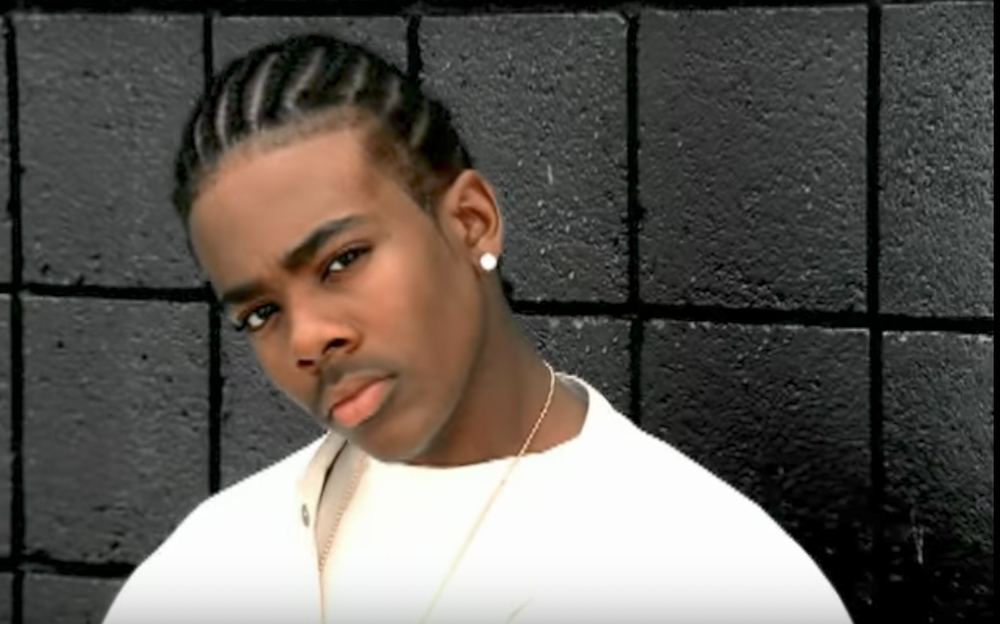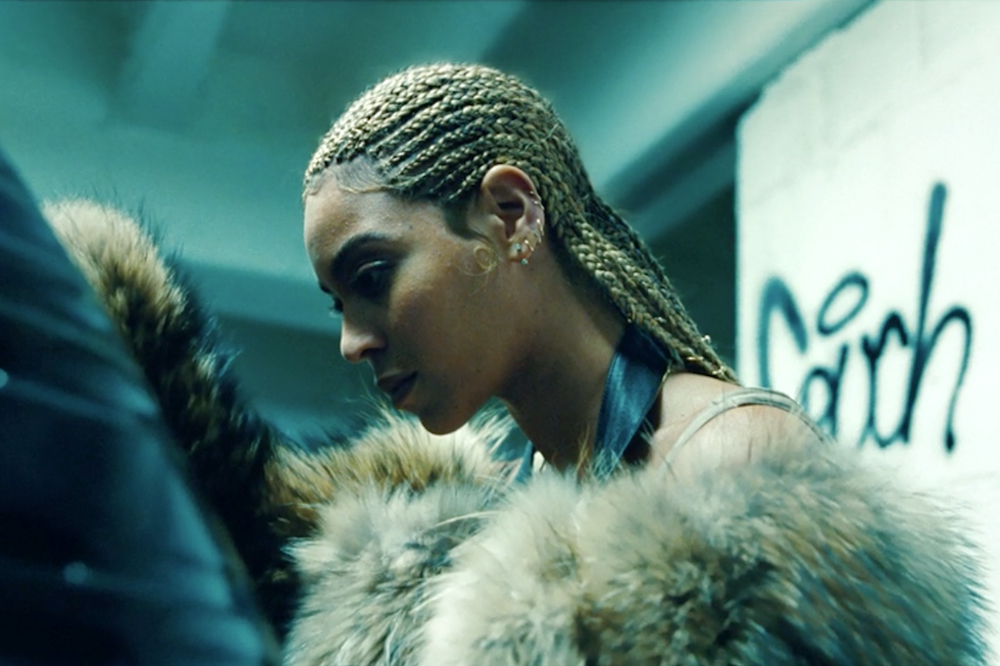One of the most memorable scenes in Beyoncé’s “Formation” video is when the singer hangs out the window of a baby blue vintage car, her sea of auburn box braids majestically flowing in the wind. It’s yet another moment of black pride in the jubilant video — the singer returning to the black hairstyle she helped make cool during her teenage years in Destiny’s Child.
Prominently worn by R&B and hip-hop artists like Ludacris, Alicia Keys, and Lil’ Bow Wow, cornrows went from being regarded as “ghetto” to “hip” by a large numbers of blacks themselves in the 90s-00s. Yet the hairstyle waned in popularity in the mid 2000s. (Ludacris and Lil’ Bow Wow got buzzcuts and Alicia Keys, Janet Jackson, and Beyoncé moved on to more Euro-centric hairstyles.)

But cornrows are back en vogue now. Their beauty is being appreciated again — due in part to trend-making celebrities like FKA Twigs, Nicki Minaj, and Zendaya stylishly rocking them with pride, and brands like Valentino and Chanel featuring them in their runway shows and ad campaigns.
Of course, the hairstyle is nothing new. Cornrows can be dated as far back as 3,000 B.C., with illustrations of African women wearing them found on Stone Age paintings discovered in the Sahara. American slaves frequently wore them because of their convenience and tidy look. When Madame C.J. Walker created the first chemical hair processor, black women began opting for straight hair (very much linked to assimilating into white culture) and cornrows became less common. In the 90s, they reappeared with a fierceness — thanks to the era seeing urban culture and pop culture become practically synonymous with each other and black fashion becoming celebrated with phenomena like durags, FUBU, and grillz.
What are cornrows? Well, the most common iteration is having the braids in neat, straight rows that resemble corn fields (hence the name). However, the braids can come in a plethora of intricate, geometric styles — it being possible for braiders to spend hours on their artistic creations. In the mid-90s, Janet Jackson popularized a new style entitled “box braids” when she starred in the film Poetic Justice. These braids are typically rope-thick, waist-length, and tightly braided. There are also micro-braids, teeny-tiny braids on the scalp —one example being Raven-Symone’s ‘do on That’s So Raven.
However, this time around, it’s not just the black community wearing cornrows. In fact, the most popular wearers of the hairstyle are not even black. The Kardashians, Miley Cyrus, and Kristen Stewart have all been captured wearing their hair in cornrows. Katy Perry wore them as the insanely problematic character “Jessica Thot” in her music video for “This is How We Do,” facing an intense firestorm of backlash.
Some say that the prejudices and struggles blacks have faced regarding natural hairstyles are erased when non-blacks wear cornrows, commonly seen as just a “phase” for these celebs. Others argue that in our globalized, cross-pollinated world, a race cannot lay claim to a hairstyle.
Regardless of which side of the argument you fall on, it cannot be denied blacks have had to fight tooth and nail for the right to wear cornrows — commonly facing discrimination and biases. For example, earlier this year the United States Army released a revised grooming policy that no longer banned women from wearing dreadlocks and braids. Before the policy change, enlisted black women could either chemically process their hair or choose from a very limited amount of natural hairstyles. When the Army reversed its policy, it said, “Females have been asking for a while, especially females of African-American descent, to be able to wear dreadlocks and locks because it’s easier to maintain that hairstyle.”
Braids have also been deemed inappropriate by some schools. Last month, a Massachusetts elementary private school banned braids and hair extensions, sending students home (largely black girls) for wearing them. The point is clear: to some, cornrows are seen as deviant, unprofessional, and inappropriate. Which makes it easy to understand why cornrows have so frequently been in one decade, out the next — because having the bravery to wear them requires not only internal appreciation and acceptance, but appreciation and acceptance from the world too.
“We know that black people have always been considered uncivilized since they were brought over as slaves from Africa,” Lori L. Tharps, a professor at Temple University and co-author of Hair Story: Untangling the Roots of Black Hair in America, tells i-D. “So anything that is considered black is considered an inappropriate thing for a work or educational setting. Because of their blackness, cornrows are assumed as inferior and seen as not having a place in ‘civilized society.'”
When white people wear cornrows, they are not combatting the “ghettoization” of the hairstyle. If anything, they are erasing the history of blacks’ struggle — co-opting the hairstyle after blacks have done all the hard work to make it accepted. White people are not putting themselves at risk when they wear cornrows. They do not face higher chances of being looked at suspiciously or profiled by police who see male wearers of the hairstyle as “thugs.” Nope. When white people wear cornrows, it’s just a hairstyle — like ponytails or mohawks — not a shaper of their lived experiences and the prism through which the world views them.
Tharps connects white people’s infatuation with picking and choosing parts of black culture, body types (butt implants being one example), and hairstyles to the movie Get Out — which, spoiler alert, depicts a white community trying to take over a black male’s body. “They don’t wanna be black but they want the black body,” Tharps asserts. “Our hair is just a part of that. They want it, but they don’t want to acknowledge where it comes from. That’s a difficult situation to be in where something is deemed uncivilized, but you still want the thing. So [whites] navigate that by naming these things something else.” For example, Kim Kardashian calling her cornrows “Dutch braids.”
Last week, Katy Perry apologized for culturally appropriating cornrows during her weekend-long, Big Brother style, Witness World Wide live stream. During an interview for DeRay Mckesson’s podcast, Pod Save the People, Perry worked hard to convince us she had achieved “woke” status. She said that a close black friend had politely sat her down and explained why it was wrong for Perry to wear the historically black and African hairstyle. “And she told me about the power in black women’s hair, and how beautiful it is, and the struggle,” Perry said. “I listened. And I heard. And I didn’t know. And I won’t ever understand some of those things because of who I am — I will never understand, but I can educate myself, and that’s what I’m trying to do along the way.”
For all the drama and obstacles, blacks are carving out a space for cornrows in the art world — showing the public that black hair can be as haute as a Philip Treacy hat. In January, Solange and hair stylist Shani Crowe teamed up to put on a live braiding show in Chicago, with Crowe creating masterfully avant garde braids. There was a line of black women sitting confidentially in an empty warehouse, like paintings on display. It was an important moment — cornrows metamorphosing over three decades from being seen as “thuggish” to true works of arts. Hopefully this time they stick around.
Credits
Text André-Naquian Wheeler
Screenshot via Youtube
